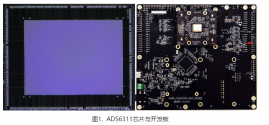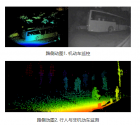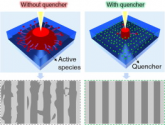few months old news but looks relevant for the autonomous-new energy car enthusiasts here.
Lingming Photon officially releases ultra-high-resolution pure solid-state lidar SPAD chip ADS6311
SPADIS area array ADS6311 chip is widely used in pure solid-state lidar fields such as vehicles and robots.
As a leading company in the SPAD dToF industry, Lingming Photonics has achieved many milestone breakthroughs in 2023, including successfully passing AEC-Q102 Grade 1 automotive certification and completing the SiPM chip production capacity increase at the hybrid solid-state lidar receiver. Pohe mass-produces goods and has been recognized by the Ministry of Industry and Information Technology as a national-level specialized, special, new and small giant enterprise, among other honors. Today, we have achieved another very exciting R&D result. The company officially released the SPADIS area array ADS6311 chip, which is widely used in pure solid-state lidar fields such as vehicles and robots!
At the upcoming 24th International Optoelectronics Expo (CIOE2023) on September 6, the company will bring silicon photon multiplier tube series (SiPM), single photon imaging array chip (SPADIS) and dToF modules, single-point and limited-point dToF Three complete product series of sensing modules were unveiled at the exhibition, and they participated in two speeches at the "Maims Micro Talk" and "Yole International Forum" to release the latest progress during the conference. We sincerely welcome and invite all industry experts and partners to visit booth 6C65 of Shenzhen International Convention and Exhibition Center for visit and guidance during the exhibition.
The development process of the ADS6311 product continued the development experience and technical barriers accumulated by Lingming Photon on the area array SPADIS products. The overall development process was very smooth. The chip design will be completed and tape-out at the beginning of 2023. In July, the software and hardware system of the prototype will be developed simultaneously. At present, the Demo has been built and various functions and performance verifications have been carried out. The SPAD design and process technology used in the ADS6311 are consistent with Lingming Photonics’ SiPM process platform. SiPM is a single-point or linear array of pixels formed by connecting a large number of SPADs in parallel. Currently, the company’s SiPM products have passed AEC-Q102 Grade1 Automotive grade reliability certification and mass production, the ADS6311 based on the same process platform can also support automotive grade reliability.
Since 2018, the Lingming Photonics R&D team has been working tirelessly to iteratively develop area array products from small to large sizes. The development of the products can be traced back to the first-generation products with 80x60 and 160x120 resolutions. The previous-generation product of this series, ADS6303 (resolution 240x160) will be successfully mass-produced and shipped in July 2021. The SPADIS chip of solid-state lidar has extremely high technical barriers, including the development of high-performance SPAD devices, the design of high-speed and high-precision digital-analog hybrid circuits, the development of lidar-specific DSP, 3D stacking technology and car-grade packaging solutions, etc.
Because of this, only a few companies worldwide have developed automotive-grade SPAD chips. Through continuous technological innovation, Lingming Photon's ADS6311 chip launched this time has reached an unprecedented resolution in this product line. The photosensitive area of the chip is equipped with 768x576 SPADs, which is 4.5 times that of IMX459 and 43 times that of ibeonext. In order to improve the anti-glare characteristics and distance measurement capabilities, every 3x3 SPADs form a super pixel, thereby achieving a point cloud resolution of 256x192, which is 4.5 times that of IMX459 and 4.8 times that of ibeonext. In the current market, ADS6311 has the highest resolution One of the top pure solid-state lidar SPADIS chips.
During the development process, the smoke test and point cloud output of the ADS6311 chip were both successful, and the point cloud output also showed high-definition and stable effects, which confirmed the tireless efforts of the Lingming Photonics team during the development process. Focus and sweat. Since the initial design of the first small-size area array, the Lingming Photonics team has set the development goal of the product line. In the future, we must design the most advanced solid-state area array chip and achieve inclusive 3D sensing technology. Commercialization requires Chinese technology to lead the vigorous development of the global lidar industry. People must be ambitious and have a long way to go. Now this goal is just around the corner with the efforts of all Lingming Photon staff.
View attachment 122498



